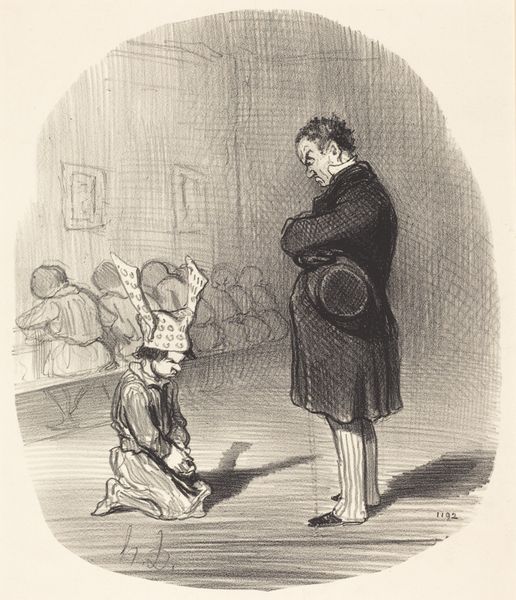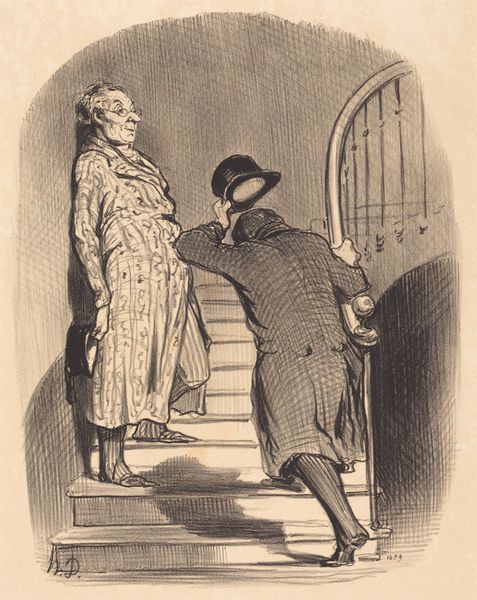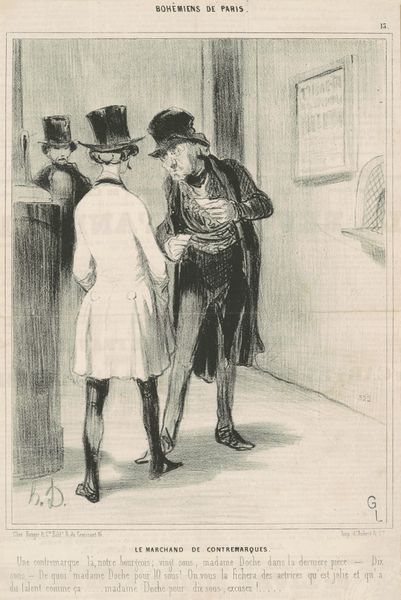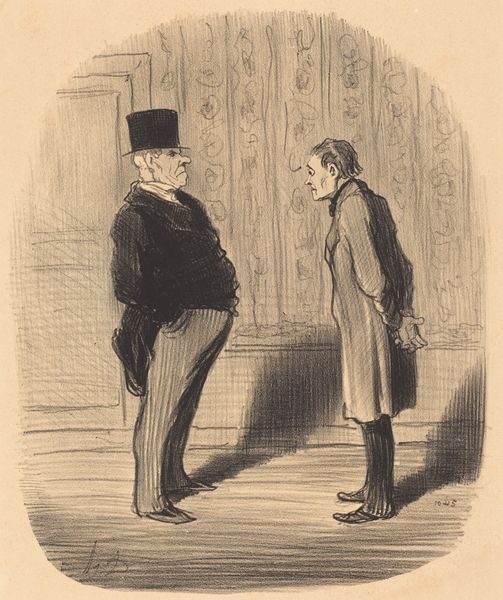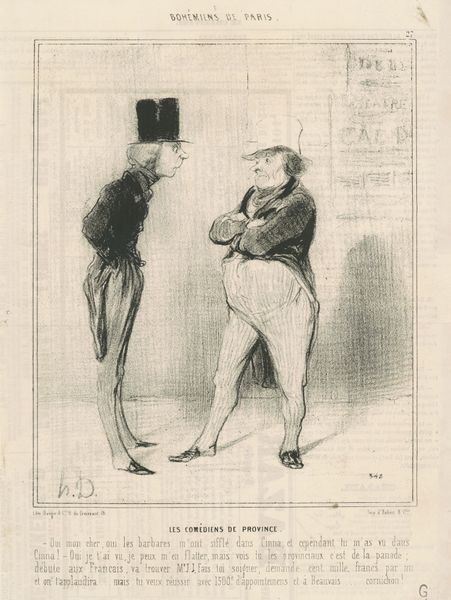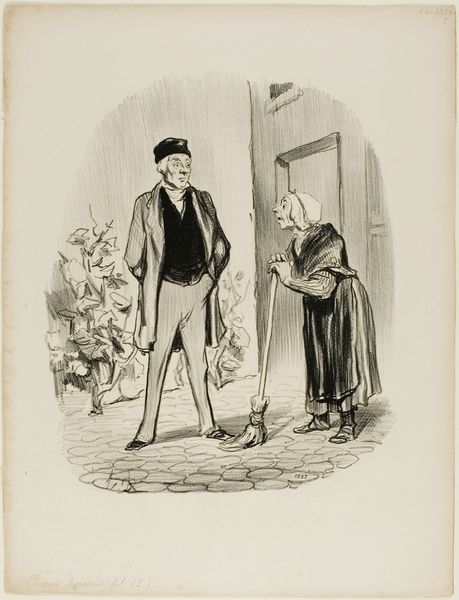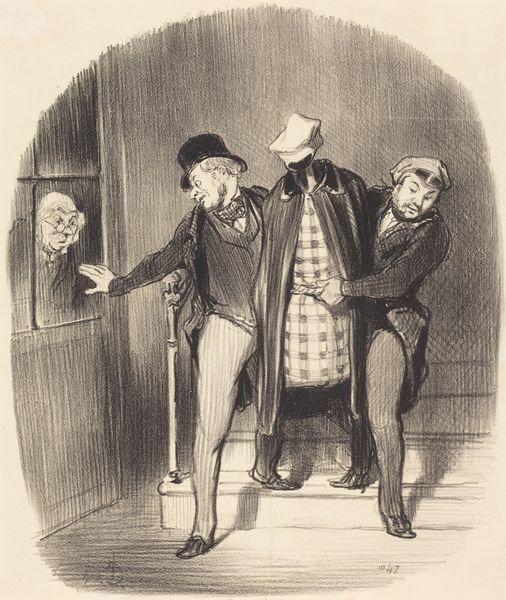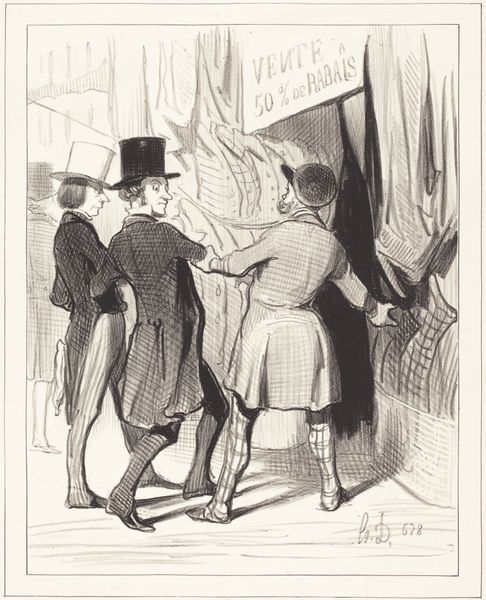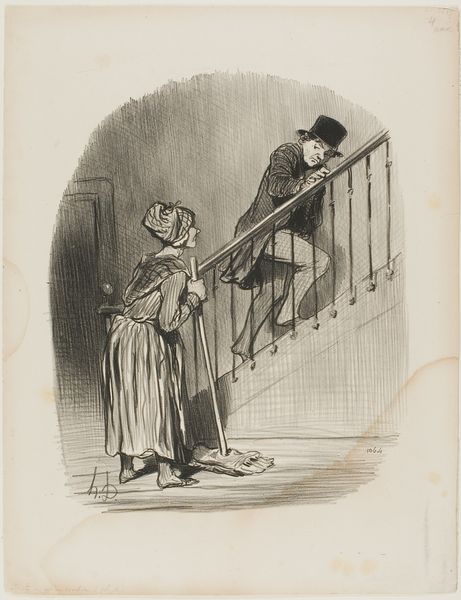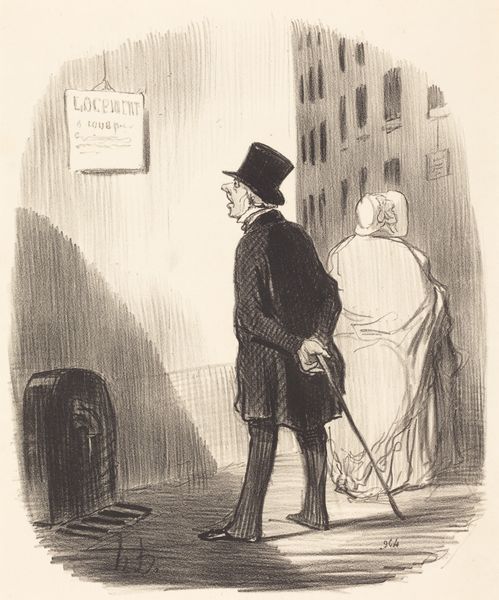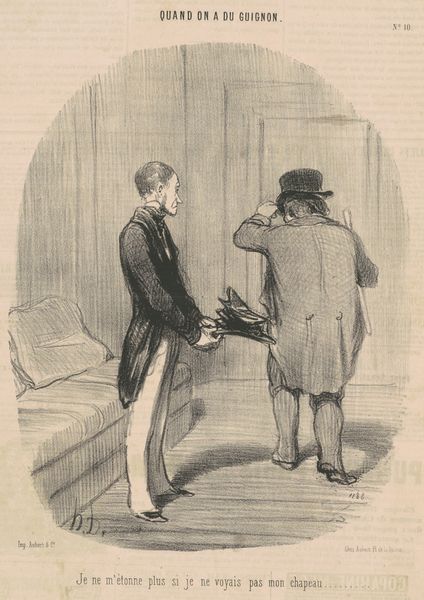
lithograph, print
#
imaginative character sketch
#
16_19th-century
#
quirky sketch
#
lithograph
# print
#
caricature
#
cartoon sketch
#
figuration
#
social-realism
#
personal sketchbook
#
idea generation sketch
#
sketchwork
#
character sketch
#
romanticism
#
line
#
sketchbook drawing
#
cityscape
#
genre-painting
#
storyboard and sketchbook work
#
fantasy sketch
#
realism
Copyright: National Gallery of Art: CC0 1.0
Editor: Honoré Daumier's lithograph, "Oh! quant a la vue, vous ne trouverez pas mieux qu'ici!" from 1847, has a subtly satirical feeling to it. I see two figures; one standing precariously on a chair seemingly gazing at something above. What socio-political commentary do you see Daumier making with this piece? Curator: That precariousness is key. Daumier, deeply embedded in the political and social landscape of 19th-century France, frequently used caricature to critique the bourgeoisie. Consider the title, "Oh! as for the view, you won't find better than here!" Where is “here” exactly? A claustrophobic room. What kind of "view" are we being asked to appreciate, and by whom? Editor: So, it’s a commentary on the inflated egos and self-importance of a certain class? Curator: Precisely! Note the figure on the chair, elevated both literally and figuratively. Is he genuinely seeing something amazing, or is this about self-deception? The other figure, possibly a servant, stands with keys, observing with a more grounded, perhaps cynical, gaze. The gaze creates a relationship with us. Are we implicated? Editor: That makes me think about the role of prints as a medium then – they were accessible and disseminated widely. Was Daumier actively trying to influence public opinion through these caricatures? Curator: Absolutely. Lithography allowed for mass production and distribution of his satirical images, directly engaging with, and influencing, public perception of the political elite. It was a powerful tool. In many ways it resembles how we now use cartoons or memes. Editor: So, beyond just artistic skill, Daumier’s choice of lithography becomes a critical part of the work’s social impact. I’ll definitely think more about that. Thank you. Curator: It is something we can keep with us as we evaluate works in all different mediums. The accessibility and the visual cues Daumier deployed give insight into understanding 19th-century French society through his eyes, questioning its values and power structures.
Comments
No comments
Be the first to comment and join the conversation on the ultimate creative platform.

